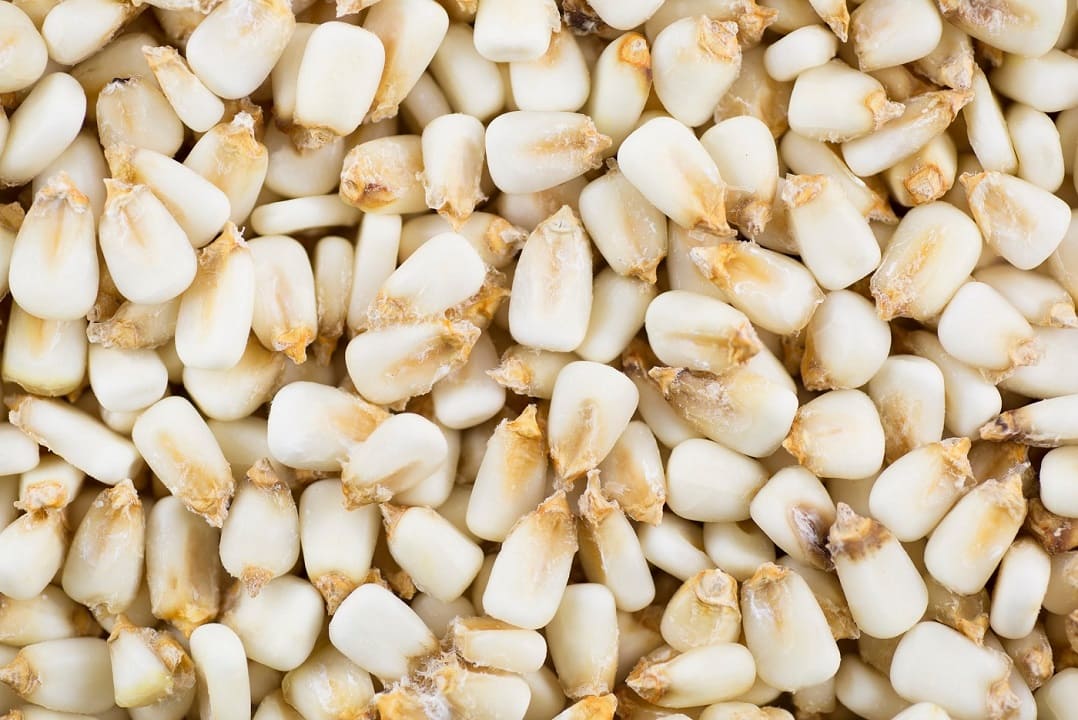Picture this: you’re wandering the canned goods aisle and spot those mysterious white, puffy kernels labeled “hominy.” They look like corn that hit the gym and doubled in size.
You’ve probably seen them floating in pozole at your favorite Mexican restaurant, but what exactly are they? And why should you care about this humble ingredient that’s been quietly revolutionizing kitchens for over 3,000 years?
By the end of this guide, you’ll understand what makes hominy special, how to cook with it confidently, and why this ancient superfood deserves a permanent spot in your pantry. Whether you’re a curious cook or a seasoned chef, hominy is about to become your new secret weapon for hearty, satisfying meals.
👉 Here’s What Every Gardener Should Know About Corn Smut: From Garden Foe to Gourmet Delicacy
What Is Hominy? The Transformation Story
Hominy starts its life as ordinary field corn—the tough, starchy variety used for animal feed, not the sweet corn you grill at summer barbecues. But through an ancient process called nixtamalization, these hard kernels undergo a remarkable transformation that’s part chemistry, part culinary magic.
The word “nixtamalization” comes from the Nahuatl term “nextamalli,” meaning “hominy.” Indigenous peoples of Mesoamerica developed this process around 1500 BCE, soaking corn kernels in an alkaline solution made from wood ash, limestone, or lime (the mineral, not the citrus fruit).
This alkaline bath works several wonders simultaneously: it loosens and removes the tough outer hull, softens the kernels, and causes them to puff up to nearly double their original size.
The result? Those distinctive, chewy, meaty kernels with a subtle corn flavor and an almost creamy interior. Think of hominy as corn’s more sophisticated cousin—same family, completely different personality.

It’s worth noting that while traditional and some artisanal producers still use wood ash or food-grade lime, commercial hominy production uses carefully controlled alkaline solutions that are thoroughly rinsed away. The lye or lime used in industrial processing is completely removed during production, making the final product perfectly safe to eat.
Why This Ancient Process Changed Everything
Here’s why nixtamalization was nothing short of revolutionary: untreated corn contains niacin (vitamin B3), but it’s bound up in a form our bodies can’t absorb. The alkaline treatment frees this essential vitamin, making it bioavailable.
Communities that relied heavily on corn but didn’t use nixtamalization often suffered from pellagra, a debilitating disease caused by niacin deficiency. Meanwhile, indigenous peoples using this ancient technique enjoyed robust health.
The process also adds calcium from the alkaline solution and creates chemical changes that allow ground hominy to form proper dough when mixed with water—something impossible with regular cornmeal.
Without nixtamalization, we wouldn’t have tortillas, tamales, or authentic Mexican masa-based dishes. When hominy is finely ground, it becomes masa harina, the foundation of countless Latin American specialties.
Beyond nutrition and functionality, nixtamalization prevents the corn from sprouting during storage, which was crucial for food preservation in ancient times. This single process solved multiple challenges: nutrition, functionality, and preservation.
👉 Here’s How to Grow a Three Sisters Garden: Corn, Beans, Squash Together
Understanding Your Hominy Options
Hominy comes in two main varieties, each with its own character.
1. White hominy offers a milder, more neutral flavor with a tender texture—perfect for dishes where you want hominy to absorb surrounding flavors without competing.
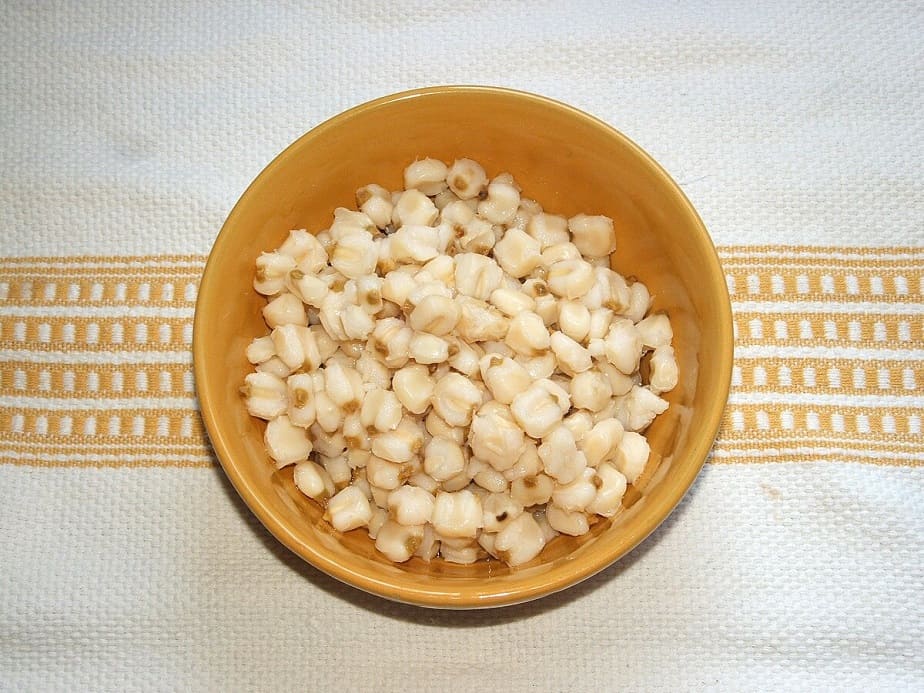
2. Yellow hominy brings slightly sweeter and more robust corn flavor with a firmer bite, plus beautiful golden color to stews and salads.
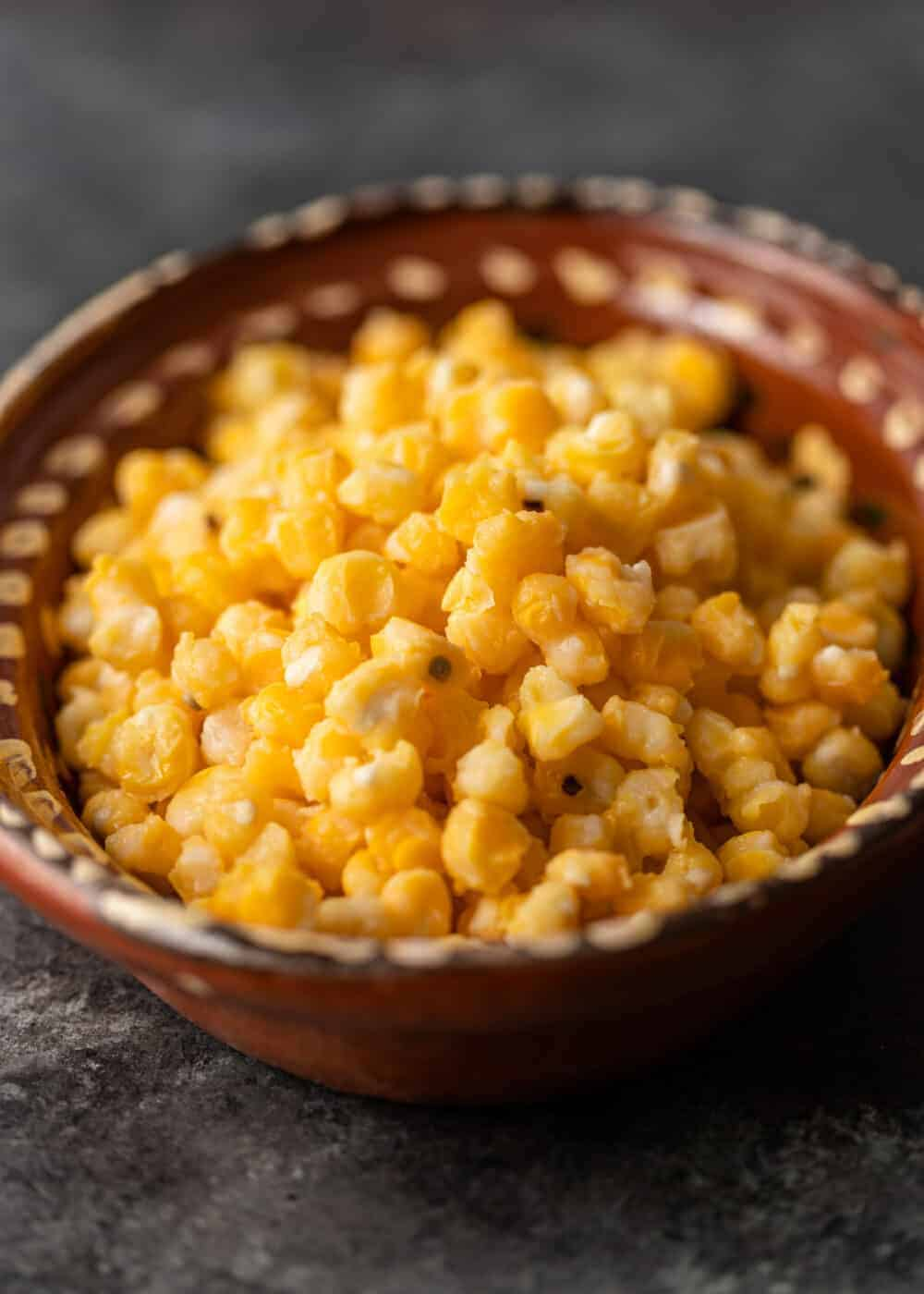
Both varieties work interchangeably in most recipes, so choose based on your flavor preferences and visual goals. You’ll find hominy in three main forms: canned (pre-cooked and ready to use), dried (requiring soaking and cooking like dried beans), and ground into various textures from coarse grits to fine masa flour.
👉 Here’s How to Can Vegetables: Complete Beginner’s Guide to Safe Home Canning
Mastering Hominy in Your Kitchen
The Convenience of Canned Hominy
Canned hominy is your weeknight hero—it’s already cooked and ready to use. Simply drain and rinse to remove excess sodium and any metallic taste from the can, then add to your dish. It’s perfect for quick additions to soups and stews, last-minute side dishes, salads and grain bowls, or casseroles that need extra substance.
Conquering Dried Hominy: The Traditional Approach
Dried hominy requires more patience but rewards you with superior flavor and texture. The basic stovetop method involves soaking one cup of dried hominy in water overnight, then draining and simmering in 4 cups of fresh water or broth for 2-3 hours until tender. Season the cooking liquid generously with salt, garlic, bay leaves, or other aromatics.
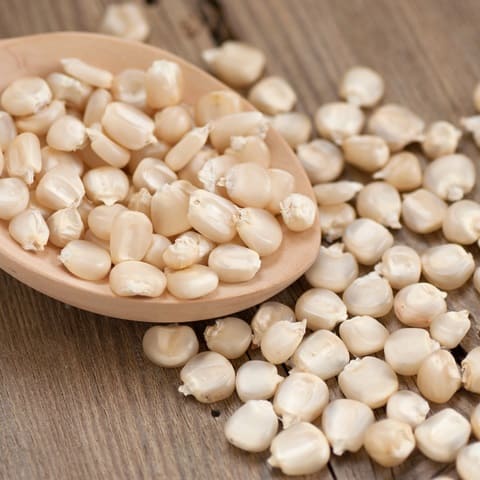
For faster results, try the pressure cooker method: after the overnight soak, combine drained hominy with liquid in a 1:3 ratio, cook on high pressure for 45-60 minutes, then natural release. This cuts cooking time significantly while maintaining excellent texture.
Troubleshooting Your Hominy
If your dried hominy isn’t softening properly after the recommended cooking time, it could be old stock. Extend cooking time by 30-60 minutes, adding more liquid as needed. Some varieties simply take longer than others. The hominy is ready when kernels are tender but still have a pleasant chew—they shouldn’t be mushy.
When selecting dried hominy, look for kernels that are uniform in size and color, free from cracks or dark spots. Avoid packages with excessive dust or broken pieces, which indicate age or rough handling.
Where Hominy Shines in Modern Cooking
The Pozole Revolution
Pozole represents hominy at its finest—a soul-warming Mexican stew where tender pork or chicken mingles with hominy in a rich, chile-infused broth. The hominy provides substance and absorbs the complex flavors while maintaining its distinctive chew.
Top with crisp cabbage, radishes, avocado, and lime for textural contrast that makes each spoonful a complete experience.
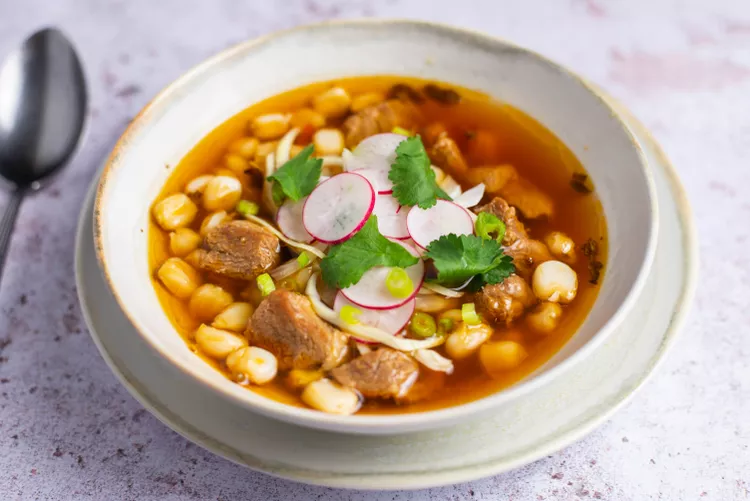
Southern Comfort: Hominy Grits
In the American South, ground hominy becomes grits—creamy, comforting, and endlessly versatile.
Unlike regular cornmeal, hominy grits have that characteristic stickiness from nixtamalization that makes them perfect for cheesy breakfast bowls, elegant shrimp and grits dinners, or creamy polenta-style sides. Leftover grits can be shaped into cakes and fried for a delicious twist.
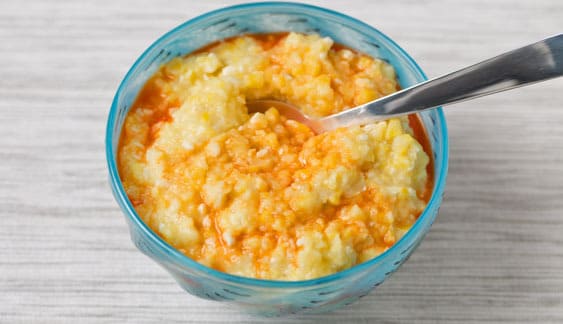
Creative Applications
Hominy’s neutral flavor and hearty texture make it incredibly versatile beyond traditional uses.
- Try it in grain salads combined with black beans, peppers, and lime vinaigrette for satisfying chew.
- Create hearty casseroles by layering hominy with cheese, chiles, and vegetables.
- Use it as a natural soup thickener that adds substance to vegetarian chilis.
- For breakfast, sauté hominy with vegetables and eggs for a filling morning hash, or fry cooked hominy until crispy for a unique corn nut alternative.
The Nutritional Powerhouse You Didn’t Know You Needed
Hominy brings impressive nutritional benefits that make it more than just a tasty ingredient. A one-cup serving of canned white hominy contains approximately 119 calories, 24 grams of carbohydrates, 2.4 grams of protein, and 4.1 grams of fiber—that’s about 11-16% of your daily fiber needs.
It’s naturally low in fat (less than 1 gram per serving) and provides essential minerals including iron (1.02mg), magnesium (26.4mg), phosphorus (57.8mg), and zinc (1.73mg).
The nixtamalization process significantly boosts the bioavailability of niacin (vitamin B3), making hominy nutritionally superior to regular corn. It also adds calcium from the alkaline treatment. Yellow hominy contains additional vitamin A compared to white varieties, supporting eye health and immune function.
Perhaps most importantly for modern diets, hominy is naturally gluten-free and provides complex carbohydrates for sustained energy without sugar spikes. At about 120 calories per cup compared to over 200 in white rice, it’s a smart swap for weight-conscious cooks who don’t want to sacrifice satisfaction.
Shopping Smart and Storage Success
You’ll find canned hominy in the canned vegetable aisle of most supermarkets, often near the corn and beans. For dried hominy or specialty varieties, check Mexican markets and international grocery stores, health food stores with bulk bins, or online retailers for convenient home delivery.
Store unopened cans in a cool, dry pantry indefinitely. Once opened, refrigerate hominy in its liquid in a covered container for up to one week—the liquid helps maintain moisture and texture. Dried hominy keeps in airtight containers in a cool, dark place for up to six months.
Cooked hominy can be refrigerated for up to one week or frozen for up to three months. When freezing, portion it into meal-sized amounts and store in the cooking liquid when possible to prevent drying out.
👉 Here are 9 Types of Corn Every Home Gardener And Farmer Should Know
Easy Recipes That Actually Work
These tested recipes will give you confidence working with hominy while showcasing its incredible versatility. Each one builds different skills and flavor profiles, so you’ll quickly understand how to incorporate hominy into your regular cooking rotation.
Southwest Hominy and Black Bean Salad
Serves 4-6 as a side or 2-3 as a light lunch
This colorful, protein-packed salad improves with time, making it perfect for meal prep or potluck contributions.
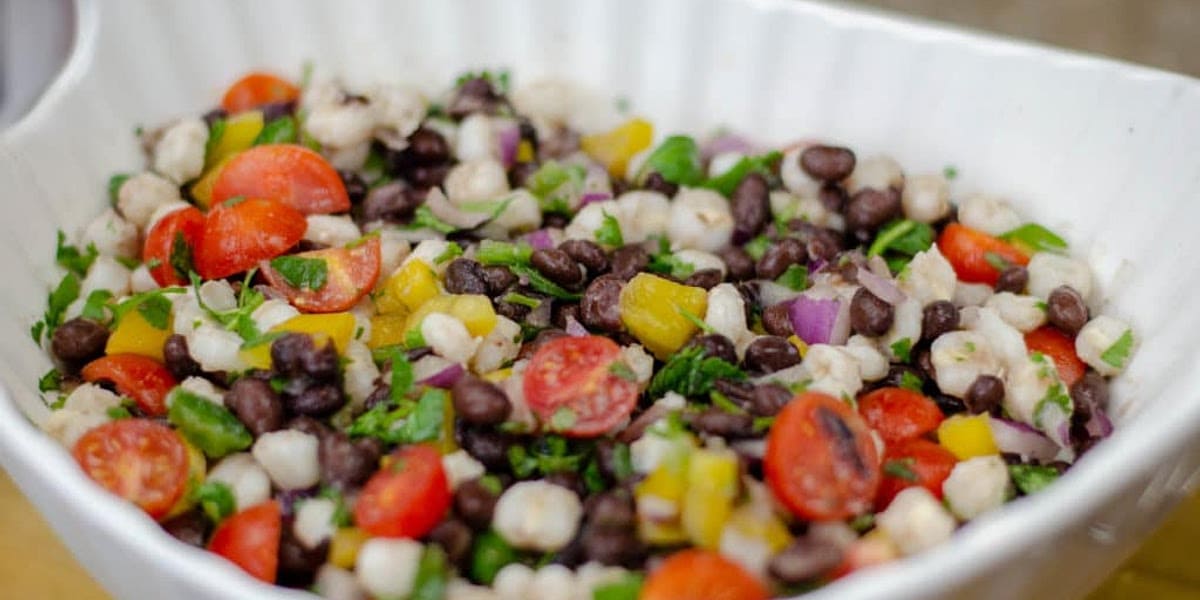
Ingredients:
- 1 can (15 oz) white hominy, drained and rinsed
- 1 can (15 oz) black beans, drained and rinsed
- 1 red bell pepper, diced small
- 1/2 red onion, finely diced
- 1 jalapeño, seeded and minced (optional)
- 1/2 cup fresh cilantro, chopped
- 2 tablespoons lime juice (about 1 large lime)
- 3 tablespoons olive oil
- 1 teaspoon ground cumin
- 1/2 teaspoon chili powder
- Salt and black pepper to taste
Instructions:
- Combine hominy, black beans, bell pepper, onion, jalapeño, and cilantro in a large bowl.
- Whisk together lime juice, olive oil, cumin, and chili powder in a small bowl.
- Pour dressing over hominy mixture and toss gently to combine.
- Season with salt and pepper, starting with 1/2 teaspoon of each.
- Let stand 15 minutes before serving to allow flavors to meld.
Chef’s Tips: This salad keeps in the refrigerator for up to 3 days and actually tastes better the next day. Add diced avocado just before serving for extra richness, or fold in some crumbled queso fresco for authentic Mexican flair.
Cheesy Green Chile Hominy Casserole
Serves 6-8 as a side dish
This crowd-pleasing casserole transforms simple ingredients into something special—perfect for potlucks or family dinners.
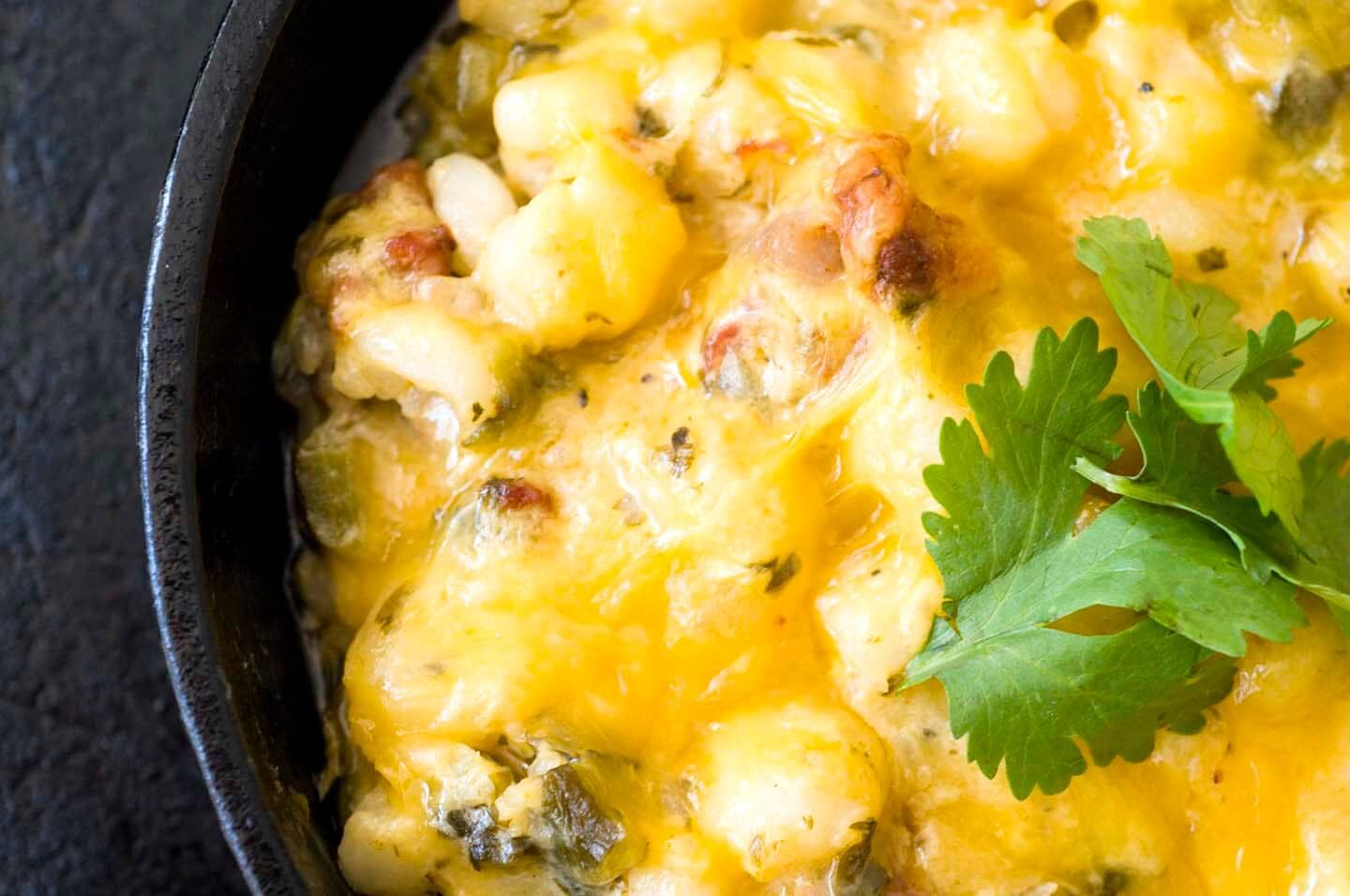
Ingredients:
- 2 cans (15 oz each) white hominy, drained
- 1 large onion, diced
- 2 tablespoons butter
- 1 can (4 oz) diced green chiles
- 1 cup sour cream
- 2 cups sharp cheddar cheese, shredded (divided)
- 1/2 cup heavy cream
- 2 eggs, beaten
- 1 teaspoon garlic powder
- 1/2 teaspoon ground cumin
- Salt and pepper to taste
- 1/2 cup panko breadcrumbs
- 2 tablespoons butter, melted
Instructions:
- Preheat oven to 375°F. Grease a 2-quart baking dish.
- Sauté onion in butter over medium heat until softened, about 5 minutes.
- In a large bowl, combine hominy, sautéed onion, green chiles, sour cream, 1 1/2 cups cheese, heavy cream, beaten eggs, garlic powder, and cumin.
- Season with salt and pepper, then transfer to prepared baking dish.
- Mix panko with melted butter and remaining 1/2 cup cheese. Sprinkle over casserole.
- Bake 25-30 minutes until golden and bubbly. Let rest 5 minutes before serving.
Serving Suggestions: This pairs beautifully with grilled meats, especially pork or chicken with Mexican spices. It’s also substantial enough to serve as a vegetarian main dish with a simple green salad.
Quick Hominy Breakfast Hash
Serves 2-3
This hearty breakfast comes together in under 15 minutes and proves that hominy isn’t just for dinner.

Ingredients:
- 1 can (15 oz) hominy, drained and rinsed
- 4 strips bacon, chopped
- 1 small onion, diced
- 1 bell pepper (any color), diced
- 2 cloves garlic, minced
- 1 teaspoon smoked paprika
- 1/4 teaspoon cayenne pepper (optional)
- Salt and black pepper to taste
- 4 eggs
- 2 green onions, sliced
- Hot sauce for serving
Instructions:
- Cook bacon in a large skillet over medium heat until crispy. Remove with slotted spoon, leaving fat in pan.
- Add onion and bell pepper to bacon fat. Cook 3-4 minutes until softening.
- Add hominy, garlic, paprika, and cayenne. Cook 5-6 minutes, stirring occasionally, until hominy is lightly golden.
- Season with salt and pepper, then stir in cooked bacon.
- Make wells in the hash and crack eggs into each well. Cover and cook 3-4 minutes for runny yolks, longer for firmer eggs.
- Garnish with green onions and serve with hot sauce.
Variations: Try this with chorizo instead of bacon for Mexican flavors, or add leftover roasted vegetables for extra nutrition.
Weeknight Chicken Pozole Verde
Serves 4-6
This simplified version of the classic Mexican soup delivers authentic flavors without all-day cooking.

Ingredients:
- 1 lb boneless, skinless chicken thighs
- 6 cups chicken broth
- 1 can (15 oz) white hominy, drained
- 1 lb tomatillos, husked and halved
- 2 jalapeños, stemmed (remove seeds for less heat)
- 1 small onion, quartered
- 4 cloves garlic
- 1/2 cup fresh cilantro leaves
- 1 teaspoon dried oregano
- Salt to taste
For serving:
- Shredded cabbage
- Sliced radishes
- Diced avocado
- Lime wedges
- Dried oregano
- Red pepper flakes
Instructions:
- Season chicken with salt and pepper. In a large pot, bring broth to a boil, add chicken, and simmer 15-20 minutes until cooked through.
- Remove chicken and shred when cool enough to handle. Strain and reserve broth.
- Meanwhile, roast tomatillos and jalapeños under broiler 5-7 minutes until charred in spots.
- Blend roasted vegetables with onion, garlic, cilantro, and 1 cup of the reserved broth until smooth.
- Return strained broth to pot, add green sauce and oregano. Simmer 10 minutes.
- Add shredded chicken and hominy. Simmer 5 minutes more. Taste and adjust salt.
- Serve hot with garnishes on the side so everyone can customize their bowl.
Make-Ahead Tips: This soup actually improves overnight as flavors meld. The garnishes are crucial—they add freshness and texture that make each spoonful interesting.
Crispy Hominy “Corn Nuts”
Makes about 2 cups
Turn leftover hominy into an addictive snack that rivals store-bought corn nuts.
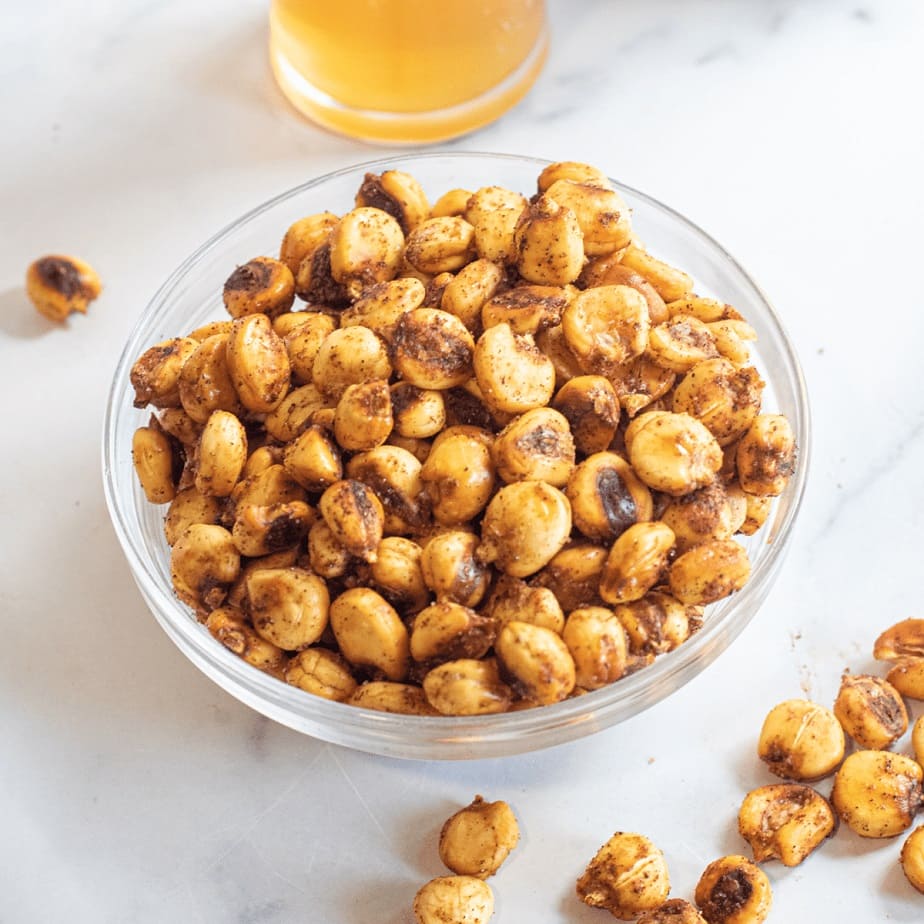
Ingredients:
- 2 cups cooked hominy (from 1 can, drained and patted very dry)
- 2 tablespoons vegetable oil
- 1 teaspoon sea salt
- 1/2 teaspoon smoked paprika
- 1/4 teaspoon garlic powder
- 1/4 teaspoon onion powder
- Pinch of cayenne pepper
Instructions:
- Preheat oven to 400°F.
- Pat hominy completely dry with paper towels—moisture is the enemy of crispiness.
- Toss dried hominy with oil and all seasonings until evenly coated.
- Spread in a single layer on a baking sheet lined with parchment.
- Roast 25-30 minutes, stirring every 10 minutes, until golden and crispy.
- Cool completely before storing in an airtight container.
Flavor Variations: Try ranch seasoning, curry powder, or everything bagel seasoning for different flavor profiles. These keep for up to a week if stored properly.
Avoiding Common Pitfalls
Success with hominy comes from understanding its unique characteristics. Always rinse canned hominy thoroughly to remove excess sodium and any metallic taste from the can. Don’t be shy with seasonings—hominy’s mild flavor needs bold companions like spices, herbs, and aromatics to truly shine.
Since canned hominy is already tender, it only needs warming through in most dishes. Overcooking makes it mushy and unappetizing. For dried hominy, that overnight soak is non-negotiable for even cooking and proper texture—shortcuts here lead to unevenly cooked kernels.
Remember that hominy absorbs flavors beautifully, so add it to dishes with well-seasoned broths or sauces where it can soak up complexity while contributing its own subtle character.
Your Hominy Adventure Starts Now
Hominy transforms ordinary meals into something special—it’s the difference between a thin soup and a satisfying stew, between empty calories and nourishing sustenance. This ancient ingredient carries thousands of years of culinary wisdom in every kernel, offering modern cooks a way to add nutrition, texture, and satisfaction to their meals.
Start simple: grab a can of hominy and add it to your next pot of chili or vegetable soup. Notice how it absorbs flavors while adding its own subtle character and satisfying chew.
Once you experience that distinctive texture and the way it makes you feel genuinely full and nourished, you’ll understand why cultures across the Americas have treasured this ingredient for millennia.
From its origins in ancient Mesoamerica to its starring role in Southern comfort food, hominy represents the beautiful intersection of tradition and nutrition. It’s proof that the best ingredients often come from understanding and respecting the wisdom of those who came before us.
Ready to join the hominy revolution? Pick up some hominy on your next grocery run and discover what you’ve been missing. This ancient grain is about to become very modern in your kitchen, bringing both history and health to every meal you create.
👉 Here are 15 Ancient Grains You Should Try — Benefits, Uses & Recipes
